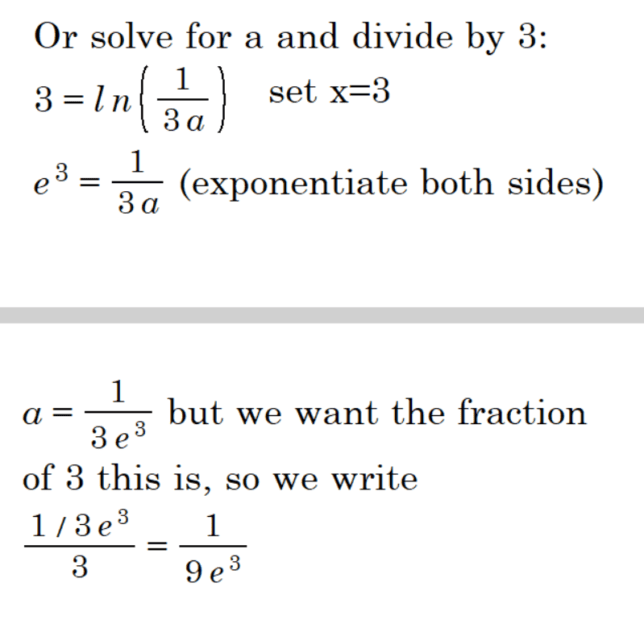To find the fraction of x that a must be to ensure the solution is 3, consider this:
- Start with x = ln(1/(ax)). Set x = 3 to solve for a.
- Rewrite ln(1/(ax)) in exponential form:
e^x = 1/(ax). - Isolate a:
a = 1/(x * e^x). - With x = 3, the value for a is:
a = 1/(3 * e^3). - To get the fraction that a represents of x:
fraction = 1/(9 * e^3).
Thus, the fraction of x that a must be to ensure the solution is 3 is 1/(9 * e^3).


